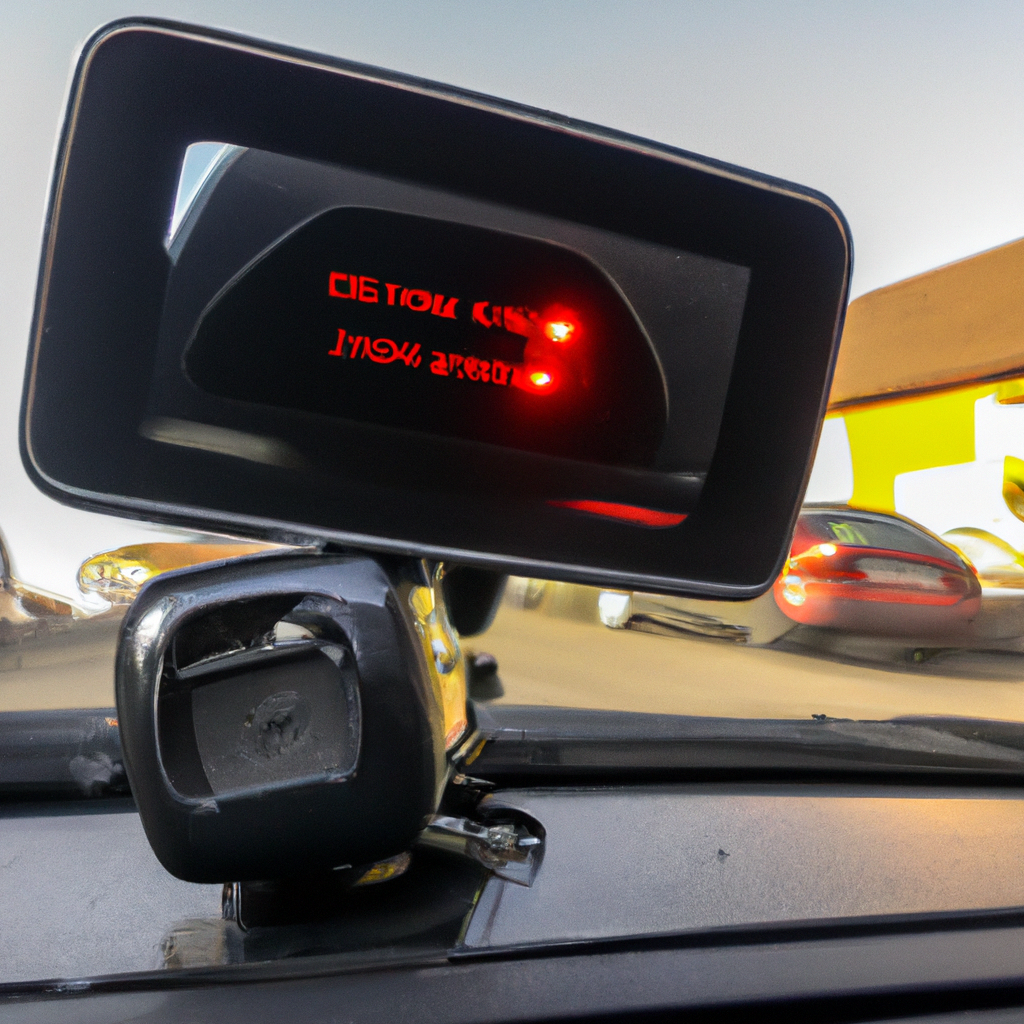-
Table of Contents
“Don’t let a dashcam installation mistake dash your dreams – Avoid Common Pitfalls!”
Introduction
Installing a dashcam in your vehicle can be a great way to protect yourself and your vehicle in the event of an accident. However, there are some common mistakes that people make when installing a dashcam that can lead to problems down the road. In this article, we will discuss some of the most common mistakes to avoid when installing a dashcam, so that you can ensure that your dashcam is installed correctly and safely.
How to Choose the Right Dashcam for Your Vehicle
When it comes to choosing the right dashcam for your vehicle, there are a few important factors to consider. Dashcams are becoming increasingly popular as a way to record your journey and provide evidence in the event of an accident or other incident. With so many different models and features available, it can be difficult to know which one is right for you. Here are some tips to help you choose the right dashcam for your vehicle.
First, consider the size and shape of the dashcam. Dashcams come in a variety of sizes and shapes, so it’s important to choose one that will fit in your vehicle without blocking your view. If you have a smaller vehicle, you may want to opt for a smaller, more discreet model.
Second, consider the features you need. Dashcams come with a variety of features, such as night vision, motion detection, and GPS tracking. Think about which features are most important to you and choose a model that has them.
Third, consider the cost. Dashcams can range from relatively inexpensive to quite expensive, so it’s important to consider your budget when making your decision.
Finally, consider the installation process. Some dashcams require professional installation, while others are designed to be installed by the user. If you’re not comfortable with the installation process, it’s best to opt for a model that comes with professional installation.
By considering these factors, you can ensure that you choose the right dashcam for your vehicle. With the right dashcam, you can rest assured that your journey is being recorded and that you have evidence in the event of an accident or other incident.
Common Installation Mistakes to Avoid When Installing a Dashcam
1. Not Checking the Voltage: Dashcams require a certain voltage to operate properly. Before installing a dashcam, make sure to check the voltage of the car’s electrical system to ensure that it is compatible with the dashcam.
2. Not Securing the Mount: It is important to make sure that the mount is securely attached to the windshield. If the mount is not properly secured, the dashcam may become loose and fall off while driving.
3. Not Connecting the Power Cable: The power cable must be connected to the car’s electrical system in order for the dashcam to operate. Make sure to connect the power cable correctly to ensure that the dashcam is receiving power.
4. Not Adjusting the View: After the dashcam is installed, make sure to adjust the view to ensure that the camera is capturing the desired area.
5. Not Testing the Dashcam: After the dashcam is installed, it is important to test the camera to make sure that it is working properly.
6. Not Formatting the Memory Card: Before using the dashcam, make sure to format the memory card to ensure that the camera is recording properly.
7. Not Updating the Firmware: Dashcam manufacturers often release firmware updates to improve the performance of the camera. Make sure to check for updates and install them to ensure that the dashcam is running the latest version.
Tips for Properly Securing Your Dashcam to Your Vehicle
1. Choose the Right Mount: When selecting a mount for your dashcam, make sure it is compatible with your vehicle and the dashcam itself. Look for a mount that is designed to fit your vehicle and the dashcam securely.
2. Clean the Mounting Surface: Before attaching the mount, make sure to clean the mounting surface with a damp cloth to remove any dirt or debris. This will ensure that the mount is securely attached to the vehicle.
3. Secure the Mount: Once the mount is in place, use the included screws or adhesive tape to secure it to the vehicle. Make sure to tighten the screws or press the adhesive tape firmly to ensure a secure fit.
4. Attach the Dashcam: Once the mount is securely attached to the vehicle, attach the dashcam to the mount. Make sure to follow the manufacturer’s instructions for attaching the dashcam to the mount.
5. Test the Mount: After attaching the dashcam to the mount, test the mount to make sure it is securely attached to the vehicle. Shake the mount gently to make sure it is secure.
6. Check the View: Once the mount is securely attached to the vehicle, check the view of the dashcam to make sure it is not blocked by any objects. Make sure the dashcam is able to capture a clear view of the road ahead.
Following these tips will help ensure that your dashcam is securely attached to your vehicle and able to capture a clear view of the road ahead.
The Benefits of Having a Dashcam in Your Vehicle
Having a dashcam in your vehicle can be a great asset for a variety of reasons. Dashcams are small cameras that are mounted on the dashboard of a vehicle and record video footage of the road ahead. They are becoming increasingly popular among drivers, and for good reason. Here are some of the benefits of having a dashcam in your vehicle.
First, a dashcam can provide evidence in the event of an accident. If you are involved in a collision, the footage from the dashcam can be used to prove who was at fault. This can be especially helpful if the other driver is disputing your version of events. The footage can also be used to support an insurance claim.
Second, a dashcam can help to deter criminal activity. If a criminal knows that their actions are being recorded, they may be less likely to commit a crime. This can be especially helpful if you are parking in an area that is known for car break-ins or vandalism.
Third, a dashcam can provide peace of mind. Knowing that your vehicle is being monitored can give you a sense of security while you are driving. This can be especially helpful if you are driving in unfamiliar areas or at night.
Finally, a dashcam can be used to capture special moments. If you are on a road trip or taking a scenic drive, you can use the dashcam to record the journey. This can be a great way to capture memories and share them with friends and family.
In conclusion, having a dashcam in your vehicle can be a great asset. It can provide evidence in the event of an accident, deter criminal activity, provide peace of mind, and capture special moments. For these reasons, it is worth considering investing in a dashcam for your vehicle.
How to Troubleshoot Common Dashcam Issues and Problems
Dashcams are becoming increasingly popular as a way to record and monitor driving activity. However, like any electronic device, they can experience issues and problems. To ensure your dashcam is working properly, it is important to troubleshoot any issues that arise. This article will provide an overview of common dashcam issues and how to troubleshoot them.
The first issue to consider is power. If your dashcam is not turning on, it may be due to a lack of power. Check the power cable to ensure it is securely connected to the dashcam and to the power source. If the power cable is connected properly, check the fuse in the power cable to make sure it is not blown. If the fuse is blown, replace it with a new one.
Another common issue is video quality. If the video quality is poor, check the settings on the dashcam to make sure they are set correctly. Additionally, check the lens of the dashcam to make sure it is clean and free of dirt or debris. If the lens is dirty, use a soft cloth to gently clean it.
If the dashcam is not recording, check the memory card to make sure it is inserted properly and that there is enough space for recording. If the memory card is full, delete some of the existing recordings to make room for new ones. Additionally, check the settings on the dashcam to make sure it is set to record.
Finally, if the dashcam is not responding to commands, check the battery to make sure it is charged. If the battery is low, charge it before attempting to use the dashcam again. Additionally, check the settings on the dashcam to make sure they are set correctly.
By following these steps, you should be able to troubleshoot most common dashcam issues and problems. If the issue persists, contact the manufacturer for further assistance.
Thanks for visiting Dashcam Installation Australia.
For more information visit local authories sites to know your rights.




